How to Set Up Your Own Podcast Recording Studio
It’s hot topic – the best way to record a podcast for small to medium budgets.
Podcasts are accessing an audience the size of which we have never seen before. And it’s been increasing for well over 5 years now.
But what is also new is the means with which to record and edit a podcast – it’s getting easier and cheaper!
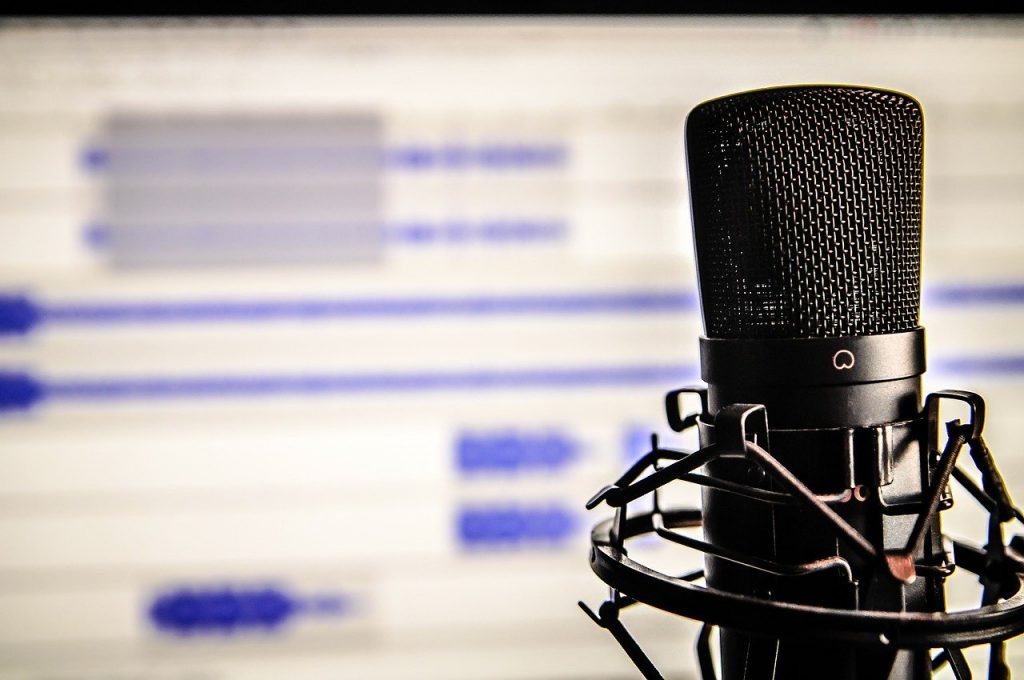
It is no longer the preserve of expensive recording studios, having to have top-notch expensive recording equipment or trying to find a dedicated studio to record a podcast.
You can now quite easily set up a podcast recording studio in your own home or office to create the next big thing on iTunes or Spotify. The equipment to do it is now much cheaper and simpler to use. Heck, you could even go as far as recording podcast on iphone these days (if you really wanted to). It would take a few tips, tricks and hacks to get it working but it’s not out of the realms of possibility.
How Do I Know What I’m Talking About?
Good question and you’re right for asking.
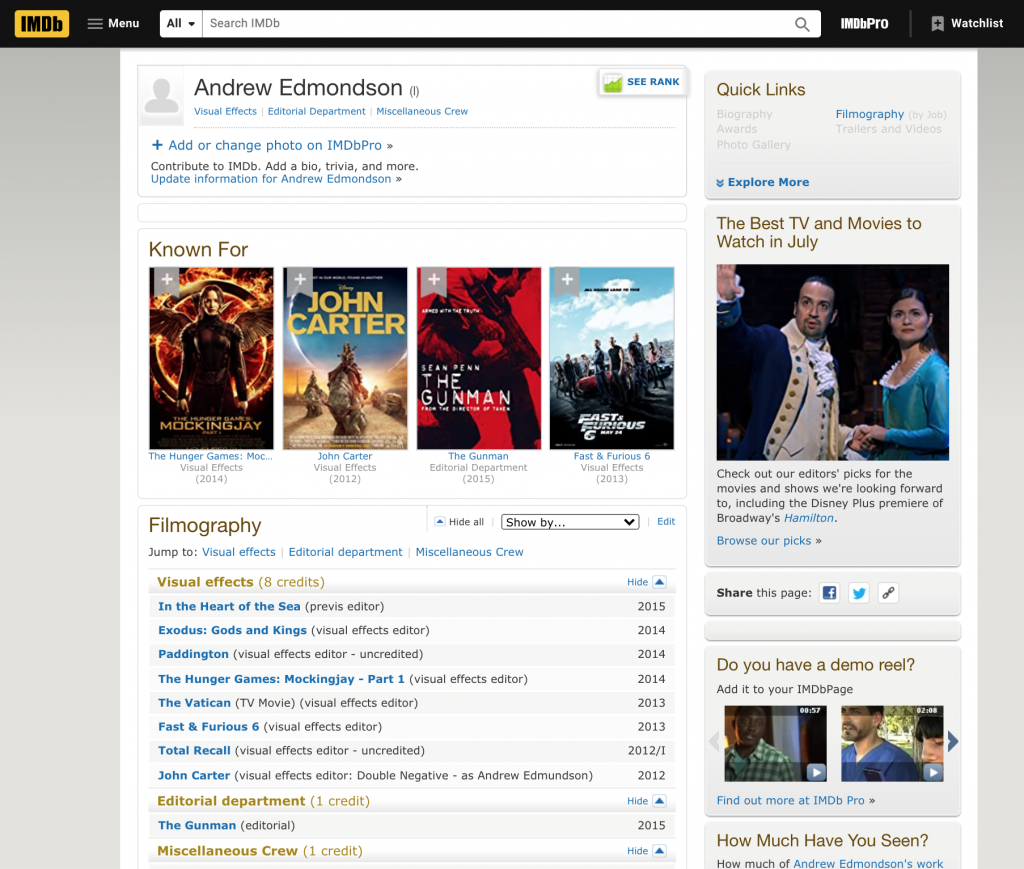
Head to the DigiProTips Experience and Background page to find out more in-dpeth about my experience but for a brief rundown; my background stems from Feature Film VFX Editing, a small amount of TV Broadcast and then a big stint in Digital Media Content Production.
The latter consisted of everything from branded commercial social content, live multi-cam studio productions streamed out over social media networks and also in-studio podcast recording for YouTube, iTunes and Spotify distribution.
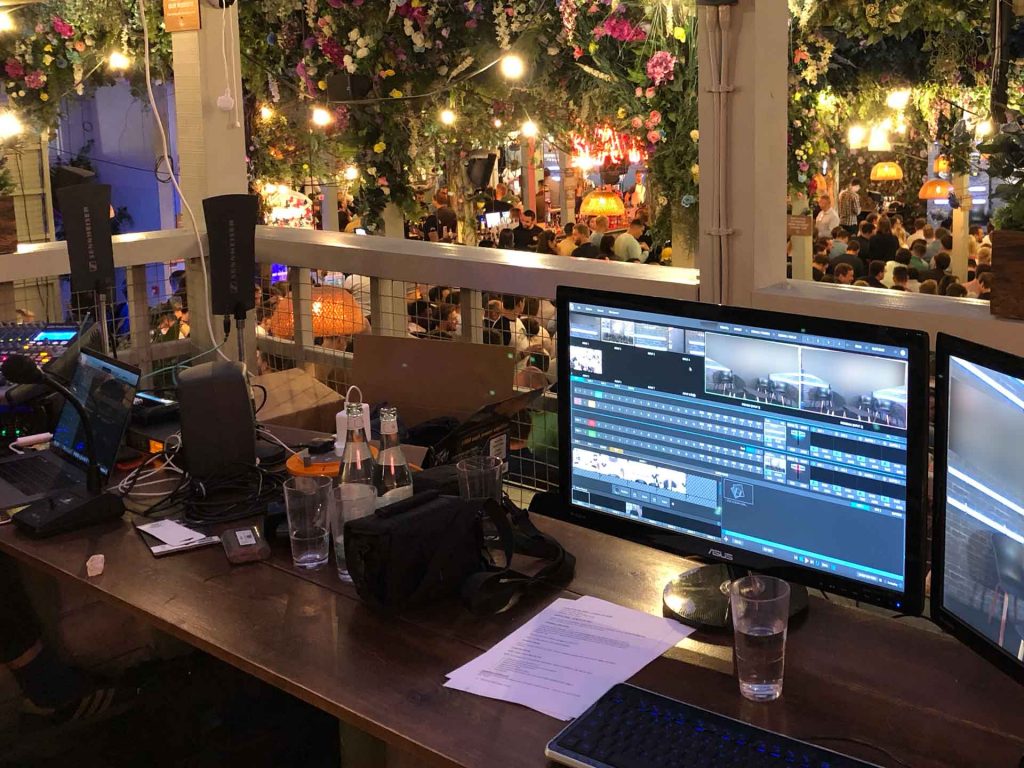

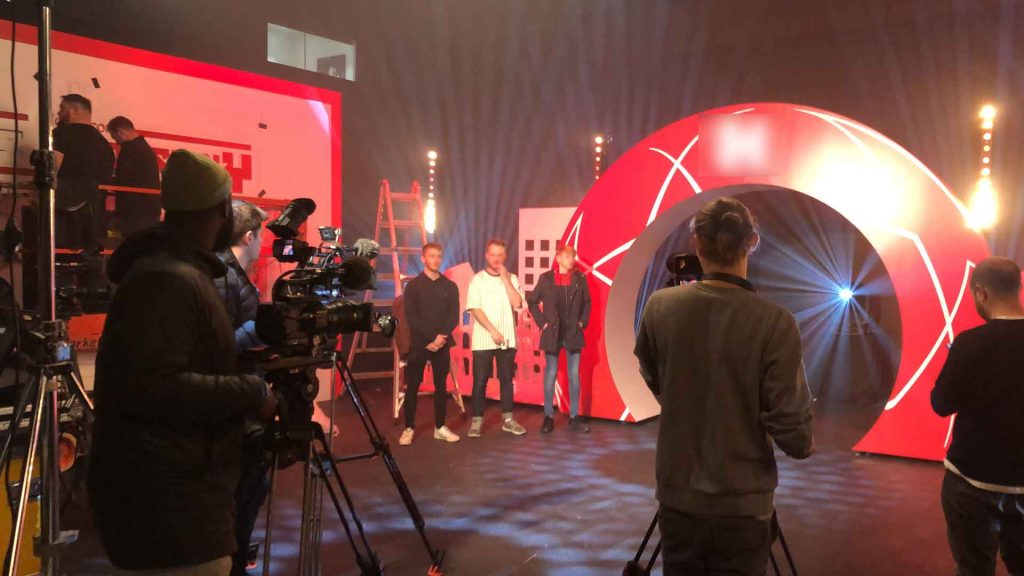
In fact, the podcasts that I have set up (from an audio-visual point of view) have appeared in the Top 10 UK iTunes list and Top 5 for Sport podcasts in the UK. One has even won ‘Native Ad Campaign of the Year’ at The Drum Online Media Awards 2019.
I have set up podcasts in a purpose-built studio with high-end equipment but I’ve also set up podcasts with the bare minimum, in a hotel room, with a multitude of high-level sports personalities and film celebrities.
So, What Do We Need to Record and Edit Audio for Podcasts?
Location, Location, Location!
Where you are setting up podcast equipment really is the most fundamental aspect of getting highly quality audio from your recording sessions.
Trust me, I have tried setting up a recording studio in a shared office meeting room and that was a terrible mistake. There was an A/C vent that no matter what I did, I couldn’t stop it from making a hum down the mics, as air flowed through it. Then there was the issue of it being a shared space outside the door; you could hear the clink of cutlery from the kitchen and footsteps passing the doorway. Oh, and the office room was on the side of the building, next to a busy road!
I tried muffling and stuffing every crevice I could find with sound absorbing materials but ultimately, the space was just not fit for purpose.
Having the right space to start with will make the biggest difference to the quality of your recording.
That’s why when I was finally able to get a purpose-built studio space that I could kit out with the best mic set ups and sound proof it accordingly then the quality went up exponentially.
Home Studio
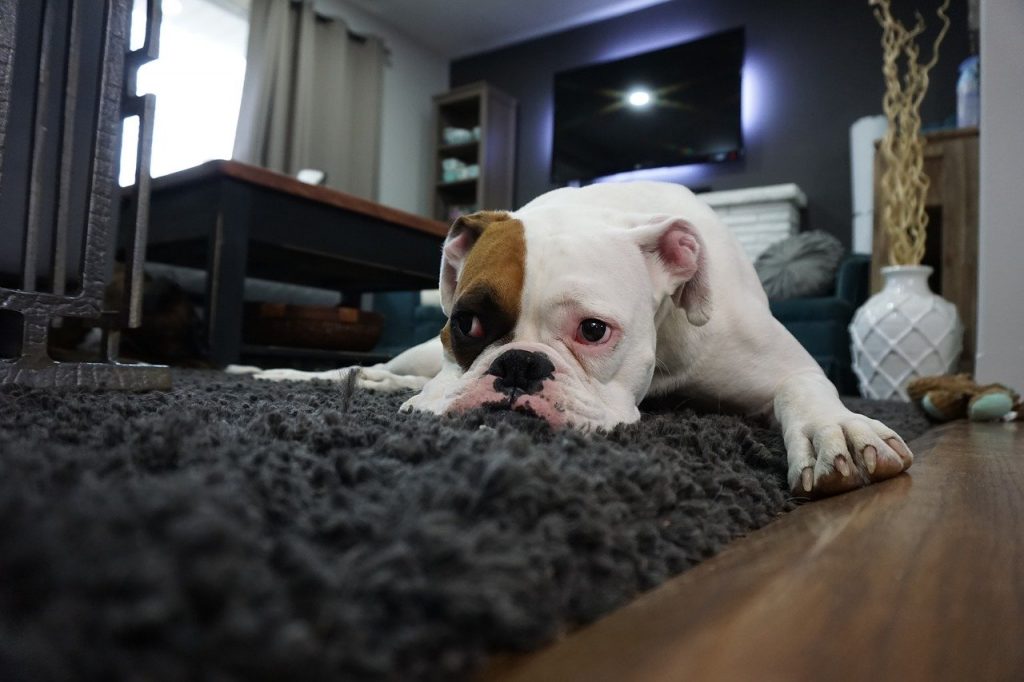
Now, if you are setting up in your home then you need to be looking for the following:
- A small room that can comfortably fit you and your guests (if you are recording a podcast with multiple microphones set up in it).
- Carpet – you need to try and reduce as many materials as you can that will reverberate sound waves around the room. Carpet can act as a great sound absorber.
- Least amount of windows as possible – glass is terrible conductor of sound and will deflect sound waves hitting it. This will introduce reverb in your recording – which we don’t want.
- Away from noises – Try and find a room that is away from the roadside, away from the kitchen or any room that could create noises.
- Curtains – Similarly to carpet, curtains can act as sound blankets that soak up those nasty reverberations.
Small Office

If you are setting up for your company’s podcast then you will most likely be having to resort to converting an office space in to a recording studio.
This is not ideal but it is also doable, so long as you try and find the following:
- A small room – offices come in all shapes and sizes but the bigger the room the more reverb you will have.
- A room without A/C – air conditioning is a nightmare. It can be intermittent, it can be loud and it can also be uncontrollable. If your building has a building-wide A/C system you may not be able to control the ability to turn it off. The only thing you can then do is remove that frequency in post (which adds time to your turn around workflow) however, if it is intermittent then that will make it even harder to do.
- Windows – as with the home set up, try and find a room in the office with the least amount of windows or glass as you can.
- Flooring – try to find a room without laminate, wood, concrete or any type of hard flooring. It will make reducing reverb that much harder to do if you have it.
Will all of the above give me flawless audio?
Erm… No.
Simply having the correct space to set up will not stop all of the unwanted noises you could experience.
Depending on your budget you will want to invest in some sound absorption materials. These will stop sound waves bouncing off surfaces that you cannot control and will make your audio sound ‘closer’. This is a more comfortable sound for us to listen to through headphones in the final product.
DISCLAIMER: This post may contain affiliate links. We make a small commission if you buy the products from these links (at no extra cost to you). As an Amazon Associate, Skimlink & Descript Affiliate, I earn from qualifying purchases. But we only recommend products we would use ourselves. For more information, click here to see our disclosures.
Sound Absorption
Moving Blankets
Moving blankets may not sound like a high-end sound absorption solution and that’s because they’re not! They are a low-cost alternative to those solutions BUT they work great!
Moving blankets are tightly woven but dense blankets, which are great at trapping and absorbing radical sound waves in your room.
Grab 2-3 of them and place them on or over hard surfaces in your room or even hang them from places if you can. Placing one above your speakers and one on the floor underneath them will give great cushioning against reverb. Yes, it may not look the best but this is a podcast, not a TV production. If you do have a video element to your recording then by placing them in crafty positions you won’t even catch them on camera.
They cost between $20-30 each, so the total cost is not huge considering the improvement in sound quality that you will get.
A moving blanket? Well, actually moving blankets are incredibly dense and absorb sound very well. They make a great cheaper alternative to sound absorption panels.
Acoustic Foam Panels
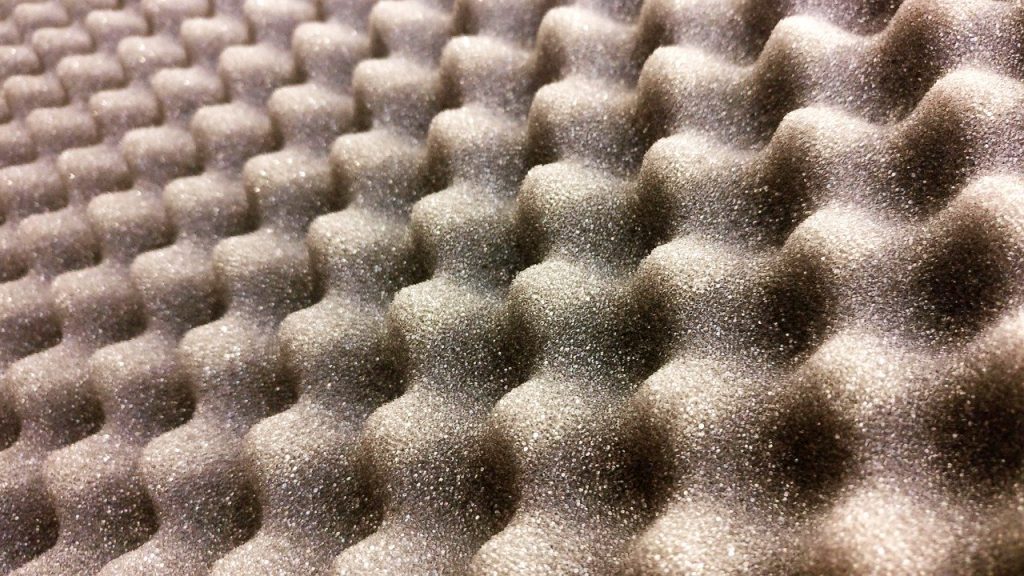
Moving up the monetary scale, you have the typical acoustic foam panels you see in studios everywhere. There’s a good reason for that – they work!
Foam is essentially pockets of air trapped in plastic. These air pockets kill the speed of sound waves as they hit it, meaning they make great sound absorption materials.
You want to stick these to the middle of your walls, in alternating patterns, to catch as many rogue waves as possible. You will want to try and place these on as many walls as you can, without it becoming ugly on camera or it starting to get in the way of switches, cabling or anything else you need regular access to.
Packs of 12 start at around $22 and move up quickly from there. You will want 3 or 4 packs though, as they don’t go as far as you would think once you start putting them up.
If you’re assembling your own studio, you want acoustic foam panels that are effective enough for you to get great sound, but affordable enough that you can fully insulate the studio against the excessive noise. Acoustic Foam Panels absorb sound generated at low, mid and high frequencies, making them perfect for recording.
Bass Traps
Bass traps are exactly what they sound like they might be – they trap bass.
Bass sound waves tend to find their way into the corners of your rooms and are the low-end frequencies created by road traffic outside a window, an A/C unit whirring away in another room or any other deep sound, it could even be one of your guests’ voices.
By placing bass traps in the corners of your room, where your walls meet, you can stop the low frequencies from reverberating back into the microphone and creating a nasty low rumble.
Packs of bass traps come in many varieties and start around $30 for smaller blocks. Grab 8-12 of these and place them strategically in the corners of your room.
Acoustic foam bass traps designed to absorb low/mid frequency sound to flatten room response and give you a warmer crystal clear sound. Bass trap foam panels are perfect for music studios, video bloggers, podcasts, home cinemas and living spaces.
Ceiling Baffles

If you have the budget and you are converting an office space into a podcast studio, then a great investment is ceiling baffles.
They are incredibly dense foam panels that you hang from a ceiling using baffle hooks and they stop most frequencies from reverberating around your office space.
I have used these in every space I have set up a permanent podcast recording studio and the effect they have on your recordings is exceptional.
A 6 pack of 800mm x 600mm panels will set you back $115 and you will need a few packs or more, depending on how big your office space is.
Ceiling baffles are a great solution for shared spaces, such as offices. The sound dampening panels are dense and thick, great at cancelling room reverb, echoes, standing waves, and noise; NRC(noise reduction coefficient): 0.87. Average absorption coefficient: 0.77
For more details on the different types of sound reducing panels you can use in your studio, check out the dedicated post on it here:
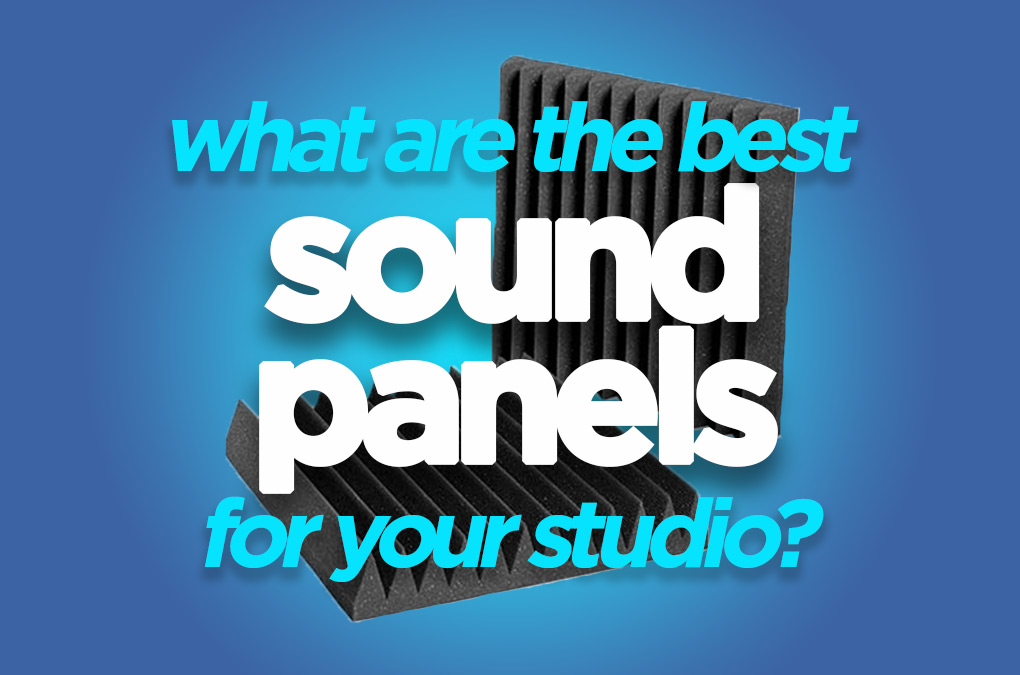
Podcast Microphones
I have conducted podcast recordings with a variety of different microphone types and there are certain microphones that suit certain set ups. All of the set ups I am going provide details for are podcast equipment for two hosts or more.
Podcast Interview Equipment
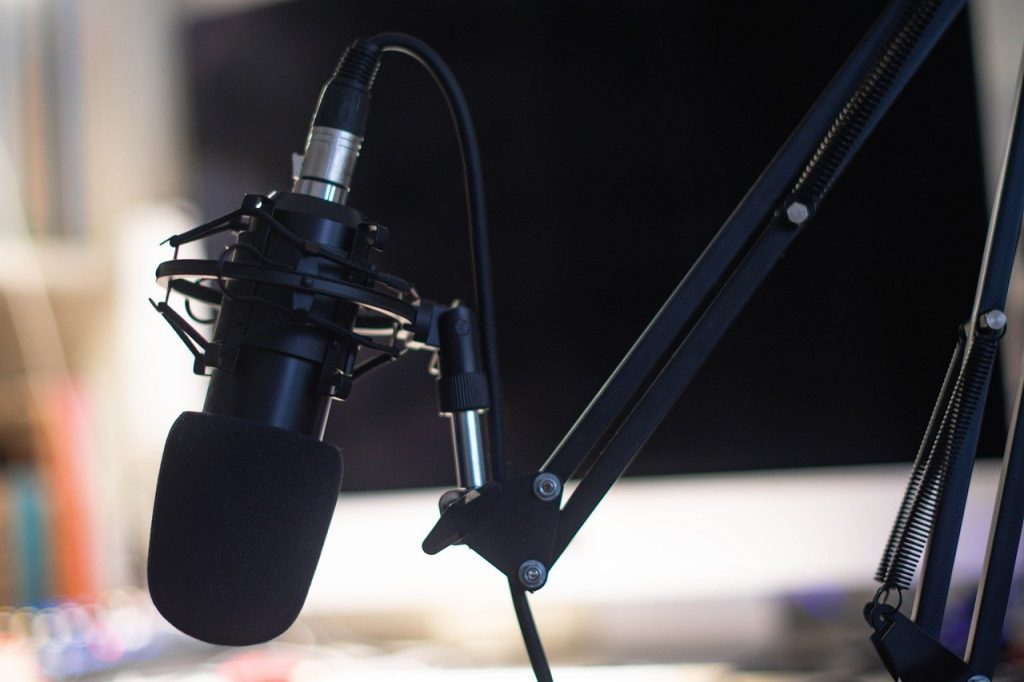
This will be the typical podcast set up. Sat down, with all speakers in a stationary position. There are really only two types of microphone I am going to suggest for this and the price points reflect the budgets you may have.
Rode NT1-A
The RODE range of microphones are some of the best prosumer mics that your money can buy. Rode have cornered the market for lower cost but high quality audio equipment and specifically their microphones.
The NT1-A, which has often been touted as one of the best in the vocal recording business, produces a very natural tone to voice recordings and can fit in with any set up very easily.
It is a cardoid microphone and will pick up the speaker directly in front of the mic eliminating any sound entering from other speakers behind or to the sides of the microphone.
You will need mic stands, mic arms or desktop mic stands for these microphones so that the mic is directly in front of the speaker.
The Rode NT1-A retails for around $200-230. This may seem punchy but when it comes to microphones and podcasting you really do ‘get what you pay for’. I wouldn’t feel comfortable recommending anything that I haven’t used and know myself to produce exceptional results.
The NT1-A Large-Diaphragm Condenser Microphone from RODE is a 1" cardioid condenser microphone. It has a self-noise level of 5 dB-A, making it a great choice for a vocal microphone, as well as for recording guitars and percussion instruments.
Shure SM7B
The Joe Rogan microphone.
The Shure SM7B has become synonymous with Joe Rogan’s podcast and is possibly the best podcast device out there at the moment.
The SM7B is, again, a cardoid mic with a polar pattern, bass roll-off and midrange emphasis (presence boost) controls, it also has shielding against broadband interference. Shure have developed an internal air suspension shock isolation system that helps to eliminate mechanical noise transmission. It is one of the best in class and for very good reason, it sounds amazing!
The speaker sounds like they are with you in the room through one of these mics and post-production effects are minimal, right off the bat.
Again, you will need to mount this mic on a stand of some sort so that the mic sits directly in front of the speaker.
The SM7B isn’t cheap but for the quality and reputation it has you wouldn’t really expect it to. The mic retails for around $400 each. If you have a few speakers then that will add up quickly BUT you really can’t beat the quality for the money and it’s probably the best microphone for group recordings.
The Shure SM7B Vocal Microphone is a dynamic microphone with a smooth, flat, wide-range frequency response appropriate for music and speech in all professional audio applications.
Roaming Set Ups

For the type of podcast set up where your guests/speakers may be walking and talking or just not sat still in front of a stationary microphone you are going to have to go with a lapel/lavalier microphone.
A lapel mic is a microphone that clips to the speakers clothing just under their chin. The mics are usually omni-directional, so that they can pick up the speaker from multiple angles but this does also mean you can get unwanted noise in your recording, as it’s not focused in on just your speaker.
RODE Wireless Go Lavalier Microphone System
The lavalier option from RODE is a great first microphone system or for someone who doesn’t want to or need to know the ins and outs of how or why mics work.
The Wireless Go system is a complete set up. The small packs clip to the speaker like a traditional lapel mic because it houses a broadcast quality lavalier mic inside the pack housing. The wireless frequencies are set automatically so you don’t need to worry about how to do that and they are on the 2.4Ghz spectrum, so licensing for frequencies isn’t an issue either.
All you need to do is charge, plug and play. The system is built for small setups and to be mobile. So much so, that you can even use it for recording podcast on iphone via the TRS to TRRS adapter cable that comes with it.
The system is great for an entry into podcasting or if your budget won’t stretch to the prosumer level mic below. The Rode Wireless Go system retails for around $200 (for one transmitter and receiver set).
The RODE Wireless GO system is a complete all-in-one Broadcast grade wireless microphone system and belt-pack. No need for setup or mic knowledge, just plug and play.
Sennheiser EW 112P G4
If you’ve got some budget behind you and you’re really looking to invest in your podcast set up then the Sennheiser EW 112P G4s are up there with the best prosumer wireless mic systems you can get.
This kit is not for beginners and the price is reflective of the level at which these mics operate.
The kit comprises of a transmitter and receiver pair, powered by standard AA batteries. The transmitter has a broadcast quality ME-2II omni-directional lavalier microphone with a 3.5mm jack. The mic on this product features advanced ‘dynamic range, the system employs proprietary HDX compander technology, preserving your sound without adding unwanted noise during transmission, and delivering audio with remarkable accuracy and quality.’ The receiver is essentially the same size and look as the transmitter but instead of a mic input there is a 3.5mm jack output. The kit comes with 3.5mm to 3.5mm jack cables or 3.5mm to XLR male cables.
The system operates on the 42 MHz bandwidth with 1680 tunable UHF frequencies. That does mean you will need a frequency license if you are intending to shoot externally or in a public area with close proximity to other businesses or people.
I have used these mics for about 5 years and can attest to their quality and their durability. You can’t go wrong with these. They have been trustworthy on every shoot I have conducted and the only reason you would ever get any hassle is if they have been mistreated by someone rather than something going wrong with the unit itself.
The cost of these bad boys is not cheap but unfortunately quality does not come cheap. The retail price is around $600 for a transmitter and receiver set. You won’t regret the investment once you have used them though.
Engineered for broadcasters in the field. Rugged all-in-one wireless system with high flexibility for broadcast quality sound. Excellent sound and construction quality. Easy to use and fast setup time. Powerful and reliable wireless transmission.
Cabling

With any of the above microphones you are going to need to connect them up to a recording device of some sort. To do that, you need cables. What cables you need depends on the mics you are using and the recording device you intend to use.
For the vast majority you will be taking an XLR output from the mic itself and connecting that to the XLR input of a recording device.
XLR is the industry standard. It is reliable, easy to use and most audio devices work with XLR in some form or other.
Stagg XLR cables are a well known industry standard cable and you won’t go wrong with them. Get a handful and you’ll be set up to go.
Stagg are a well known brand in the audio industry and their XLR cables are of a high build quality, they are reliable and they won't let you down.
What is the Best Podcast Device to Record Into?

So, we move on to recording devices.
There are essentially two routes to go down. One is to record directly on to a digital audio recording device and have the mics connect directly to that. This would record your separate mic tracks as individual files to an SD card, for you to then edit with on a computer later. You can also record a simple mixdown of all the mics as one file if you would prefer.
Another option is to connect your mics to an interface to be able to manually adjust settings and add effects before connecting it via USB to a laptop or computer to be recorded into a dedicated piece of audio recording software. This has benefits to intermediate and advanced users who want more control over their setup and recording.
Digital Audio Recorders

Recording Podcast On iPhone
As I mentioned earlier you could record your podcast on an iPhone by connecting the mics to a TRRS adapter BUT I really wouldn’t suggest doing this, unless your budget won’t stretch further than that.
If you want to try this route, for simple two person interviews, then all you need are your mics with a 3.5mm jack to connect to the RODE SC6-L dual TRRS interface.
This will allow two mics to be recorded via your iPhone and a headphone output to monitor them both too.
Dual TRRS input and headphone output for Apple Devices. Can be used with two RØDE smartLav+ microphones and one pair of headphones, allowing audio monitoring and playback, perfect for interview scenarios.
Zoom H6
The Zoom family of recorders are the go-to for videographers, in-field audio recordists and podcasters alike. They do everything from handheld one mic devices up to 8-track field recorders.
We’re looking at the H6 recorder because it is something I have used and know well. I have also used the Zoom H4n extensively over the years but for multi-person podcast recording the H4n doesn’t have what we need.
What we need and want is 4 dedicated XLR inputs, like the H6 has.
Unless, you know your podcast is only ever going to be yourself or one other guest, then this might be overkill and you could actually use the H4n for that purpose. But for the vast majority, we want more inputs than that.
The H6 can actually record 6 tracks of audio, 4 dedicated XLR inputs and then two tracks using the left and right channel of stereo 3.5mm input. As we are using XLR though, having four XLR inputs is highly advantageous for us. The inputs have their own gain controls and you can also give them phantom power with this device. Static table mics such as the ones I mentioned above will all need phantom power to operate, otherwise there is no current flowing through them to give you any recording.
The H6 works from battery power, so it is portable. It also records to SD cards, so you should have no problem getting your recordings off and onto a computer afterwards.
The H6 is not a ‘low-cost’ option exactly but it is a solid investment for the amount of use you will get out if it. It retails at around $336.
Portable 6-track portable recorder for recording podcasts, audio for video, music, and more. Four mic/line level inputs with XLR/TRS combo connectors for connection of microphones and line level sources.
RODE Rodecaster Pro

The Rodecaster Pro by RODE isn’t exactly a digital recorder by it’s definition as it’s not as small and portable as the Zoom range might be but that doesn’t mean this unit isn’t transportable and it is certainly easy to use.
The reason why I have included it here is because the Rodecaster Pro setup can act like a digital audio recorder through its ability to record to MicroSD cards.
That means you have the full operational capabilities of the unit, including controls for every input and effects for each channel.
It really is as simple as getting it out of the box, connecting your mics, turning it on and hitting record. The sound quality out of this thing is superb for the price point also. Many in the industry have been genuinely surprised at just how good this desk is, myself included.
The unit is at the higher end of this list. The RODE Rodecaster price starts at around $600.
Whether you are new or a seasoned broadcast pro, the RØDECaster Pro Podcast Production Studio is all you will ever need. 4 high-quality mic channels power studio condenser mics and conventional dynamic mics and feature automatic level setting and one-touch recording to a microSD card.
Digital Audio Interfaces
Focusrite Scarlett 2i2 USB Audio Interface
Starting at the low end and for upto two speakers, the Focusrite Scarlett 2i2 is a fantastic little device.
It will take two XLR inputs and convert the analog signal into a digital signal that is routed through USB to your computer.
You can then record those inputs as separate tracks or as a mixdown in your audio recording software.
‘The 24-bit / 192 kHz converters ensure that signals are captured and reproduced with detail and clarity.’
I’ve used this little device countless times and am always surprised by how easy and intuitive it is to use and the power it provides. I’ve used it for interviews, for voiceover recording directly into Premiere Pro and for live conference call setups where multiple mics are needed.
The unit retails at $160 and comes with a free extensive software bundle which ‘includes music production software, virtual instruments, plug-in effects, loops, and more.’
Focusrite Scarlett 2i2 is a 2x2 USB audio interface offering high-performance hardware, customizable mic tone, and a creative software bundle.
RODE Rodecaster Pro
That’s right, it’s here again.
But this time we’re using it as a digital audio interface.
And we can do that because it too has a USB output to connect to a desktop or laptop.
This thing is so versatile that it really is value for money here. It can act as a portable digital recorder and a digital audio interface. And if that wasn’t enough it can also has the ability for recording phone calls for podcast by utilising it’s in-built bluetooth connectivity.
What more could you ask for?
Whether you are new or a seasoned broadcast pro, the RØDECaster Pro Podcast Production Studio is all you will ever need. 4 high-quality mic channels power studio condenser mics and conventional dynamic mics and feature automatic level setting and one-touch recording to a microSD card.
Recording and Editing Software
We’re nearing the end of our extensive rundown of the equipment needed to setup a podcast.
However, the last big piece of the jigsaw is what software we use to record into (if using a digital audio interface) or which software is the best for podcast editing.
Recording Software
Audacity
If you’re looking for the closest thing to a free podcast recorder then Audacity is probably it.
Audacity is a free piece of software for Mac and Windows and is simply an audio recorder. It doesn’t have many tools up its sleeve but it does what it says on the tin and for free, you can’t really complain.
Give it a go and see how it feels. If it doesn’t have what you need then you can carry on down the list and invest in some more professional software to record your podcast with.
Adobe Audition
Adobe Audition is part of the Adobe Creative Suite and is a dedicated piece of audio recording and editing software.
Audition isn’t ideal for beginners who may be put off by the many tools in its interface but if you watch a couple of YouTube tutorials you’ll be well on your way to using it for recording AND editing your podcast.
Another reason for Audition is that it is available for Mac and Windows, so anyone can install and use it.
You need to pay a monthly subscription fee to use Audition but if you are planning regular podcast sessions this will work out cheaper than buying separate recording and editing packages.
Apple Logic Pro X
Logic Pro X is an advanced piece of software with many plugins available for it that can transform your recording from mediocre to incredible simply by using some of the tools inside of Logic.
However, the learning curve in Logic is a bit steeper than some of the above options.
You can record as many tracks as you please with Logic and have effects and enhancements on one or all of the tracks. You can then use Logic to edit with afterwards too.
Logic Pro is only available on Apple Mac computers and retails for $200.
Audio Editing
Descript
I am not going to mention Adobe Audition or Logic Pro X here as I have already stated that they are editing tools as well as recorders.
Instead I want to highlight a piece of software that could be transformative for anyone who doesn’t want to have to play around with in-depth audio tools to edit their podcast.

With Descript the program will transcribe your audio recording and give it to you in a text doc format. You can then go through and clean up your audio by either editing the text like a word processor or lifting sections of the waveform out.
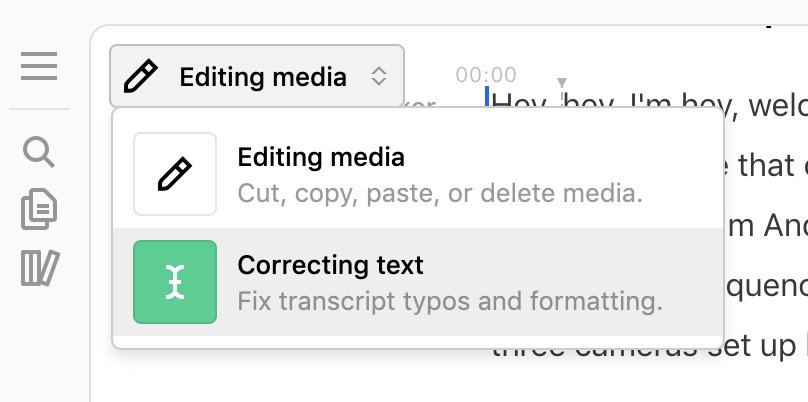
Descript will save you hours of time and it also has the ability to edit video this way too. So if you are recording your podcast on camera you can edit the video using the word processor method too… Incredible!
Descript gives you 3 hours worth of free transription and then you have a subscription payment method after that.

It’s well worth it in my opinion.
Conclusion
Whew! That was a long list!
At the end of the day only you know how the setup of your podcast is going to be and only you know the budget you have to kit it out too.
You can combine all sorts of the different equipment types I’ve listed here to create your own set up or you could go down the low-cost route for everything and still have a very good quality recording. If you do have budget though then the higher ticketed items will give you that discernible boost in quality that you are looking for.
Happy podcasting!
For tips and tricks on getting perfect audio on your shoots every time check out the guide here:
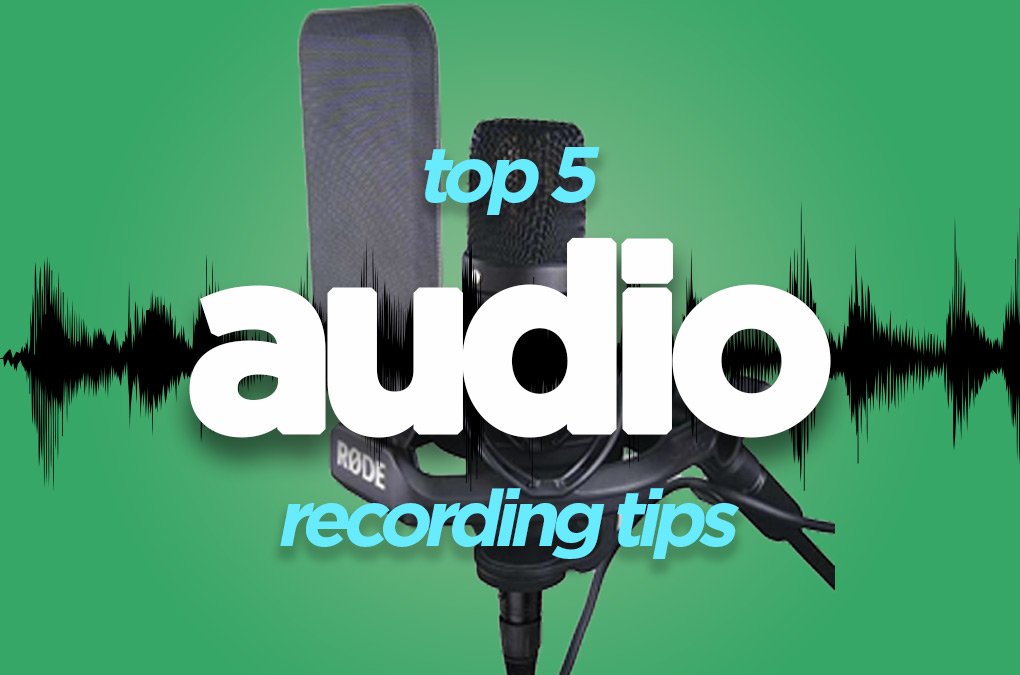
Also, for more on Descript, check out my guide to automated subtitles in Premiere Pro using it too:
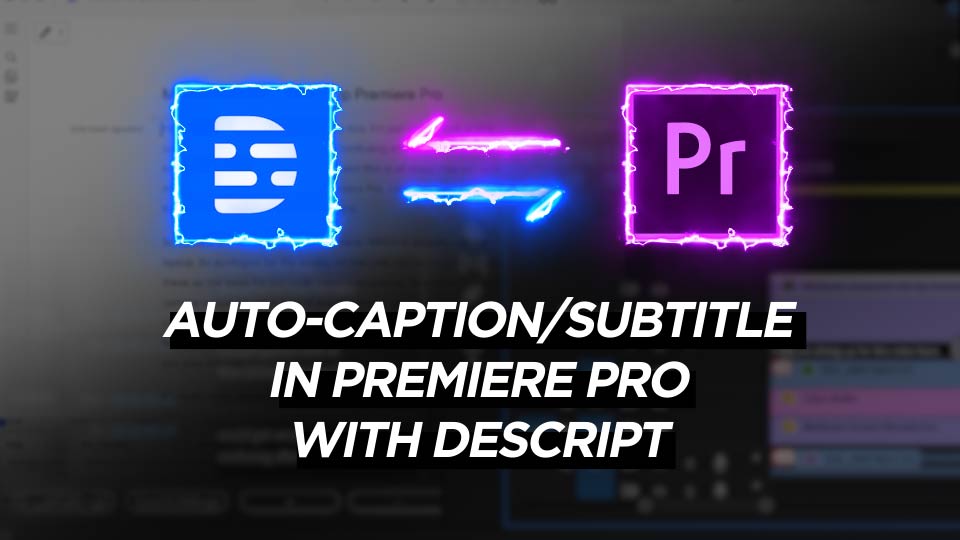
DigiProTips

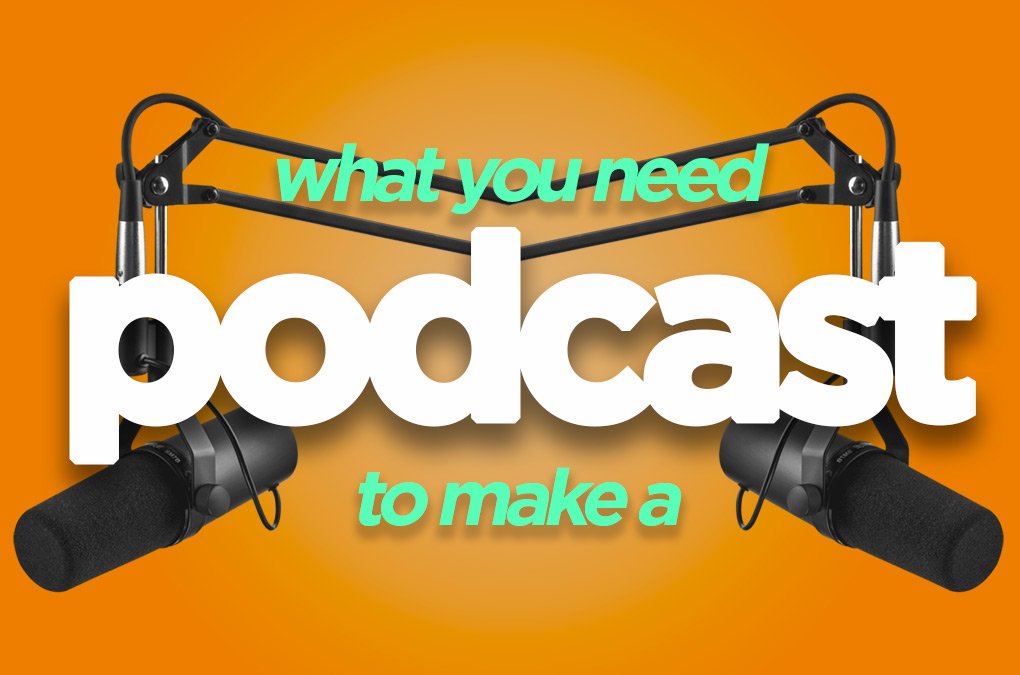

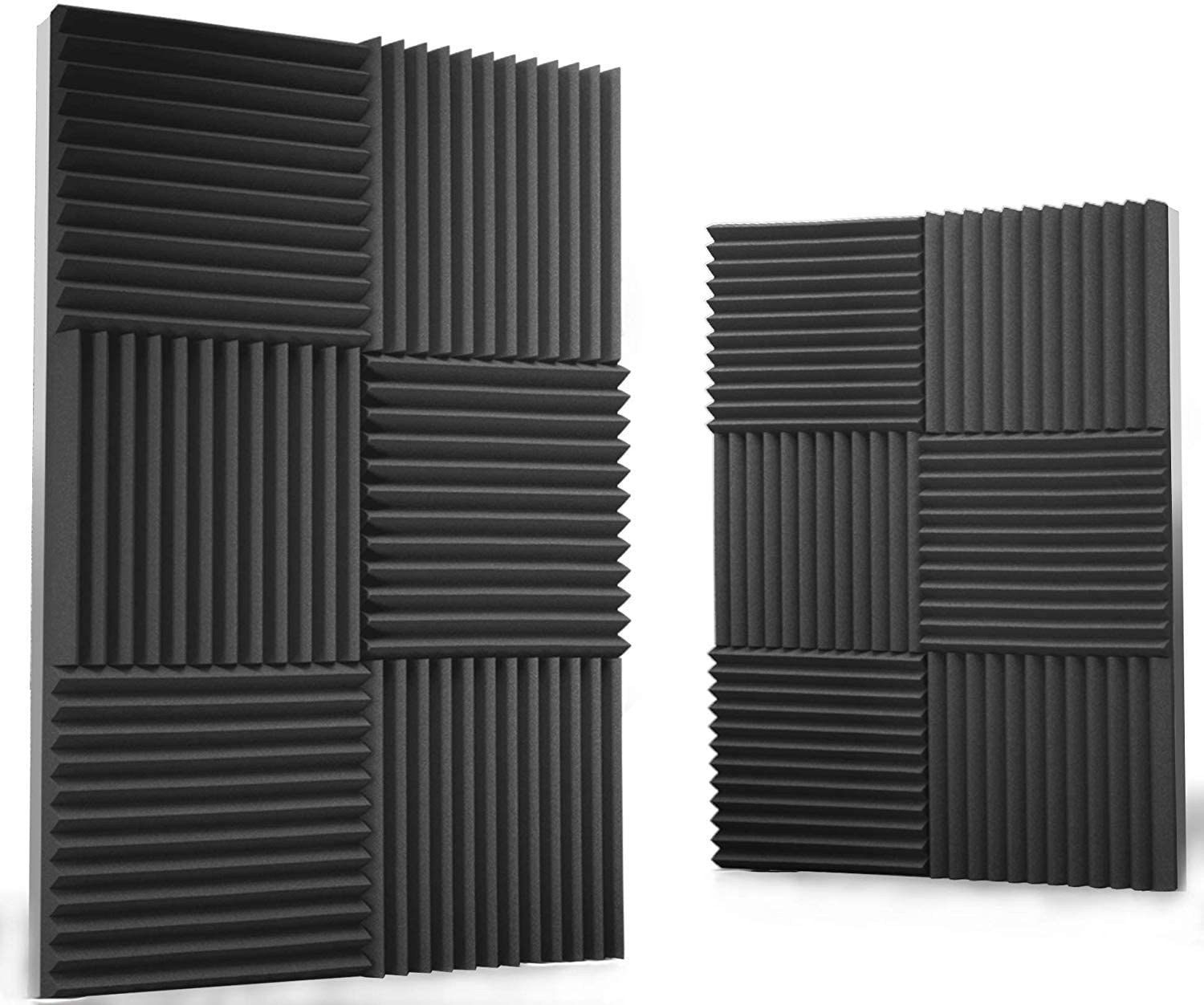
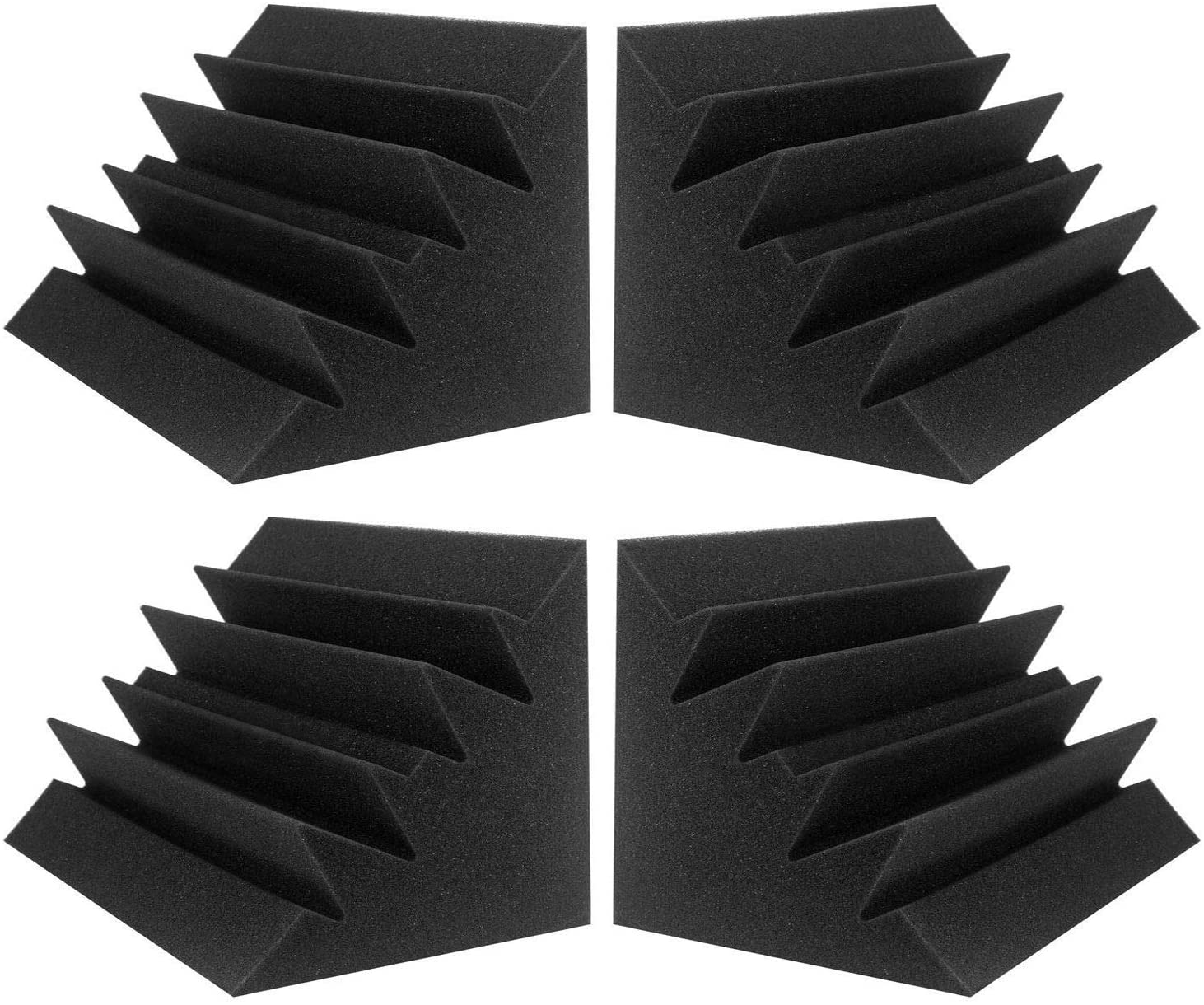
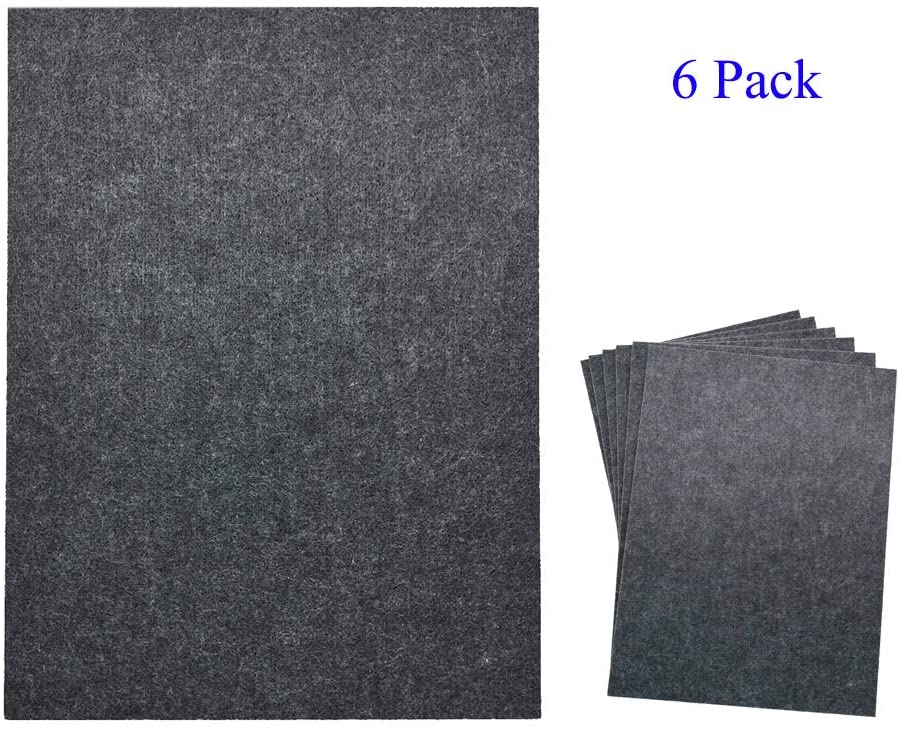
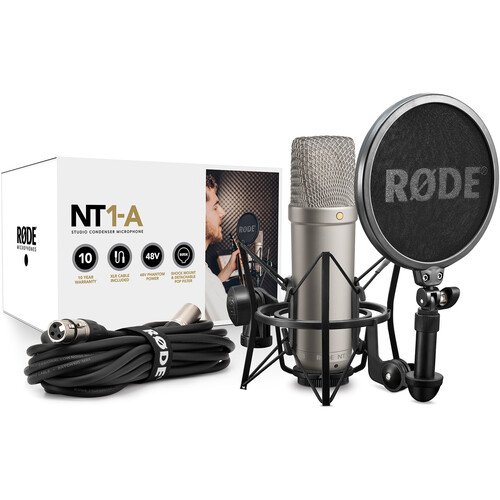



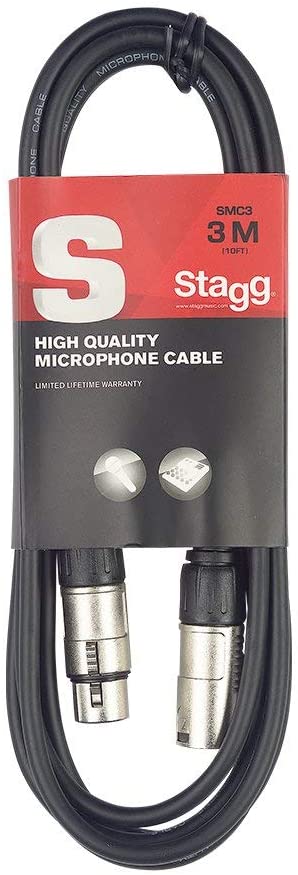
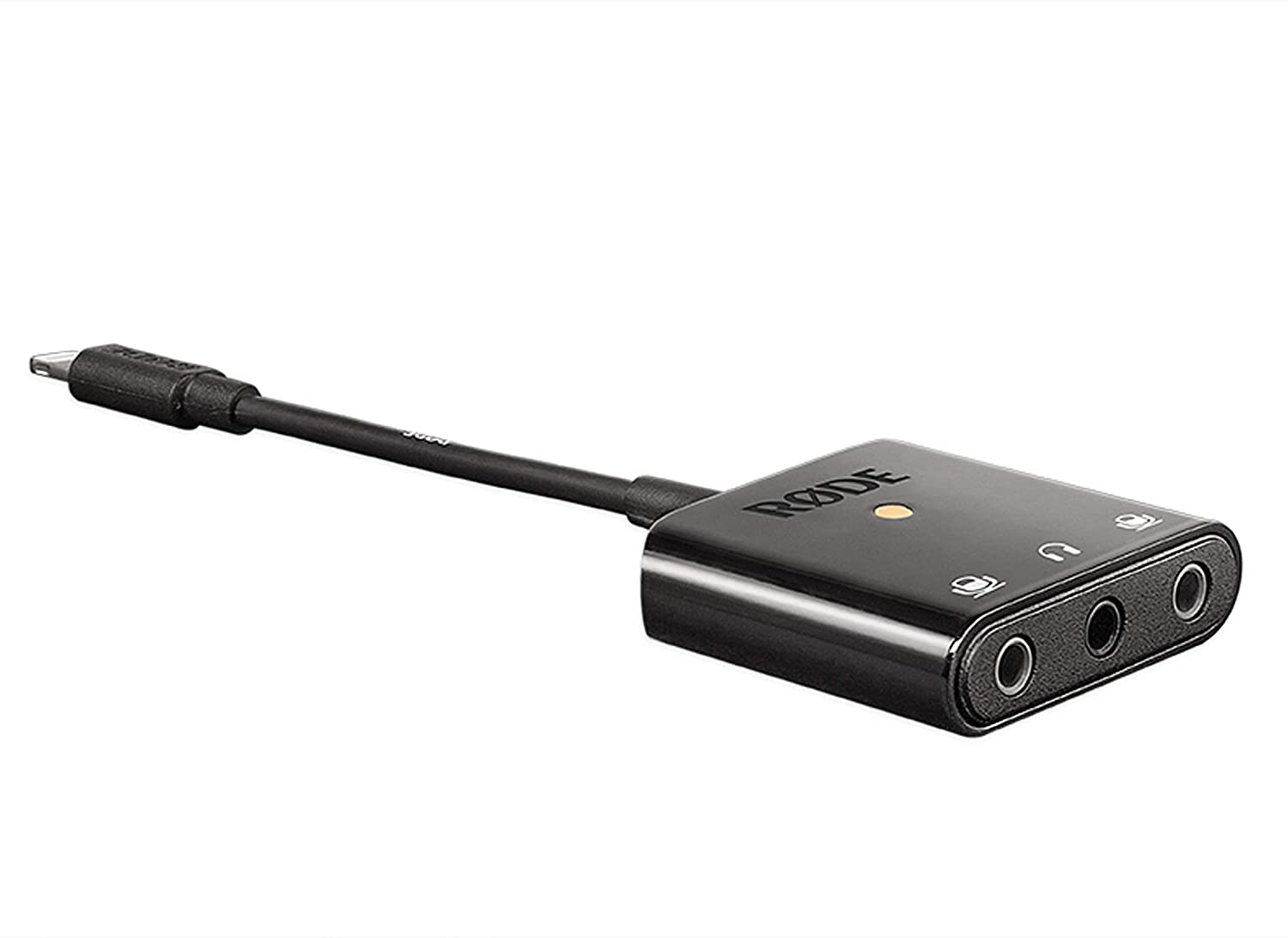

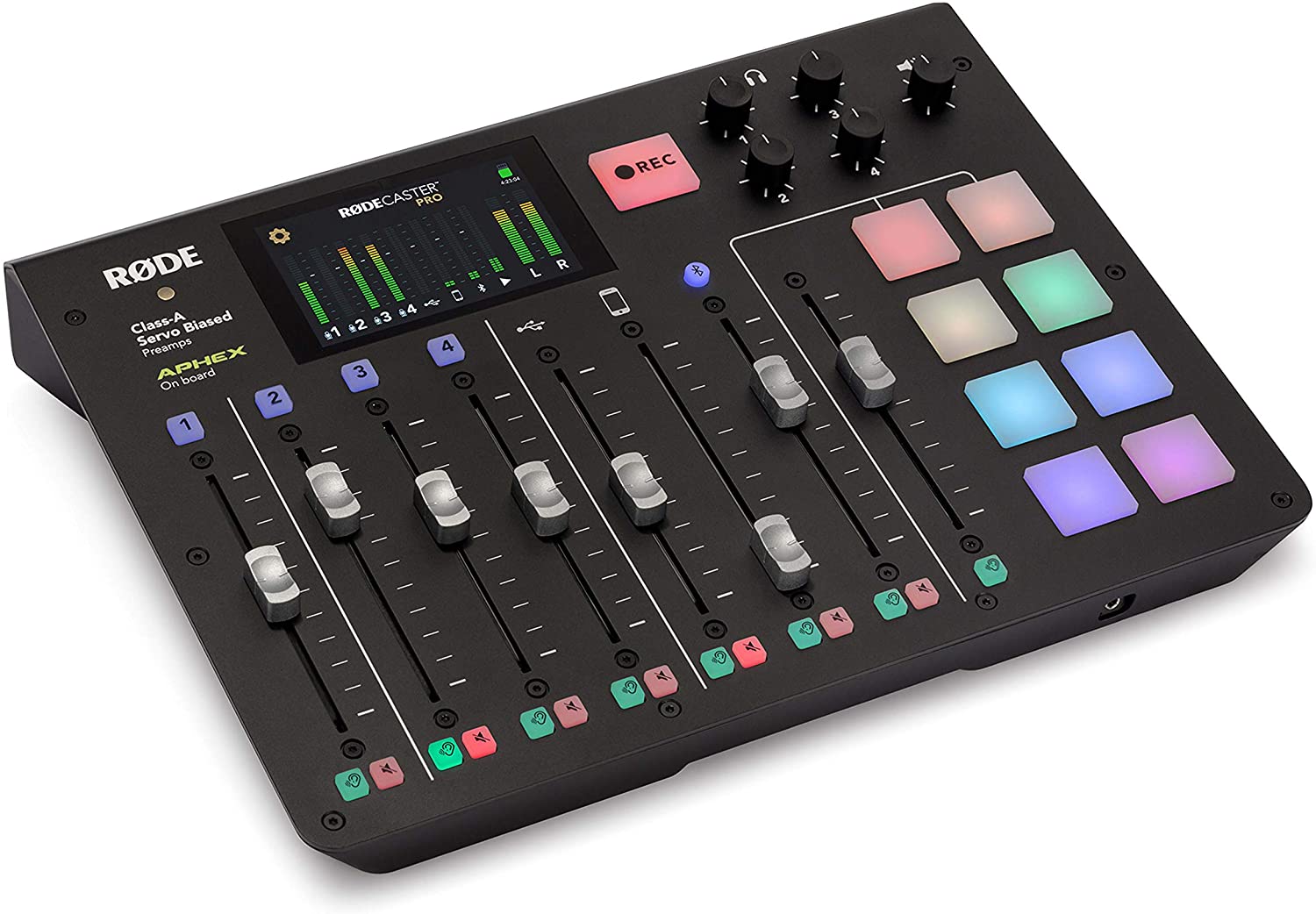
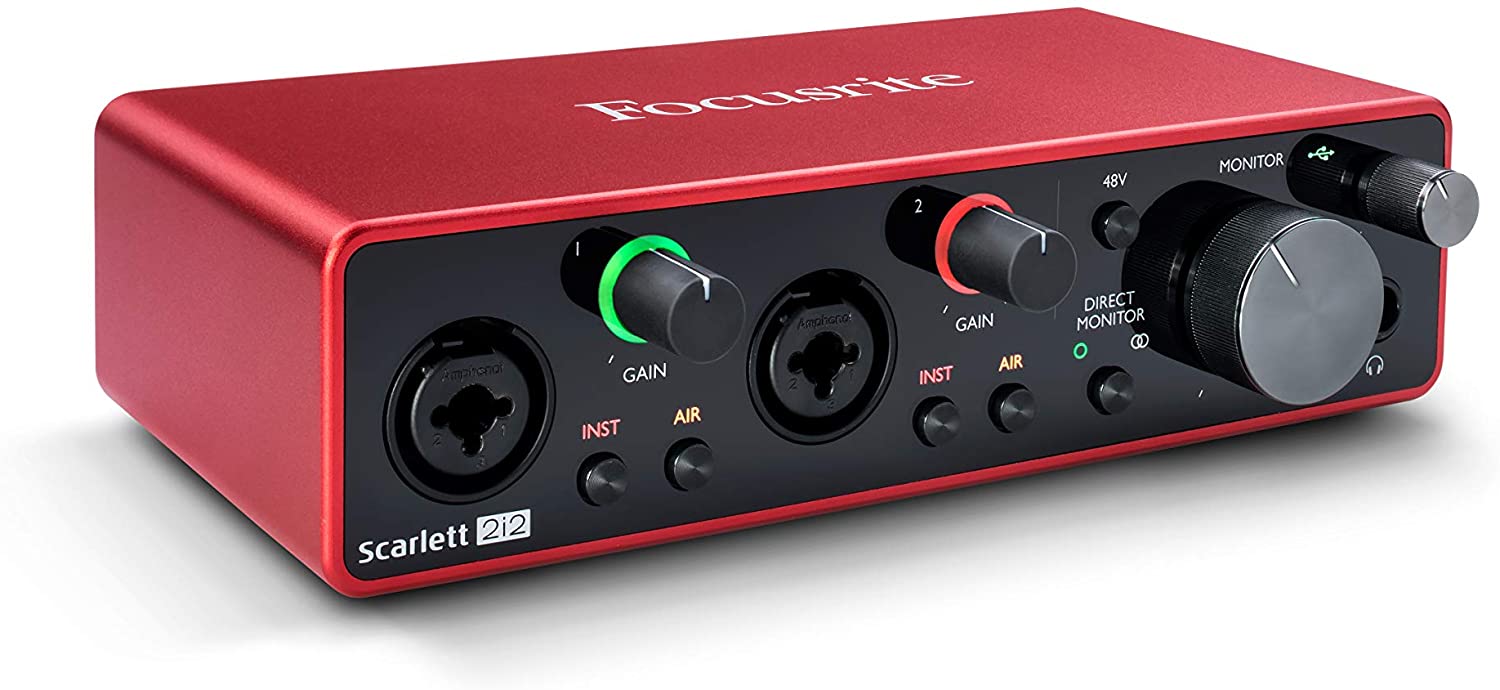
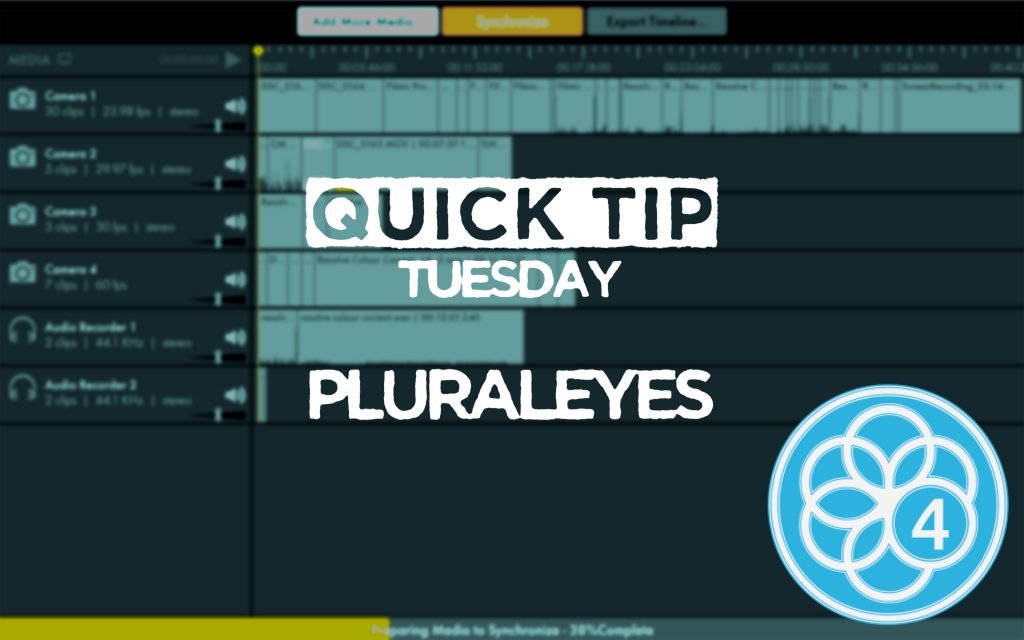
Pingback: X Rite Color Chart - Get Perfect Color in Camera, Everytime! - DigiProTips